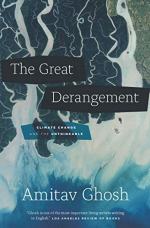|
This section contains 1,156 words (approx. 3 pages at 400 words per page) |

|
Anthropocene
In Part I, Section 4, Ghosh introduces the term "Anthropocene" while discussing the work of Dipesh Chakrabarty. It is a term frequently used in literary, cultural, and scholarly works to describe the modern era of life on Earth as it relates to climate change. Chakrabarty defines this era as one in which "humans have become geological agents, changing the most basic physical processes of the earth" (9). Ghosh declares that the Anthropocene "presents a challenge not only to the arts and humanities, but also to our commonsense understandings and beyond that to contemporary culture in general" (9). He is principally concerned with describing how that challenge manifests in literature in Part I of the text.
Gradualism
Gradualism is a term used in geology to describe the theory that Earth's evolution has been a slow, gradual process. This is in contrast to the theory of catastrophism, which posits that these changes...
|
This section contains 1,156 words (approx. 3 pages at 400 words per page) |

|




